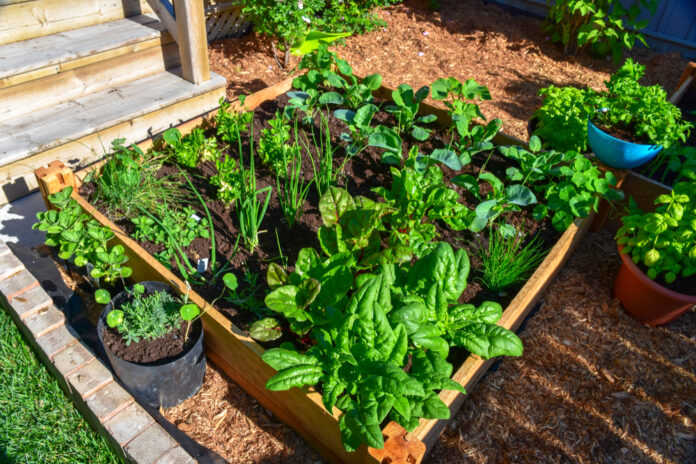There’s something uniquely satisfying about snipping fresh herbs from your own garden to enhance a home-cooked meal. Growing herbs at home not only adds flavor to your dishes but also brings a host of benefits, from cost savings to healthier, pesticide-free produce.
Why Grow Your Own Herbs?
Fresh herbs can transform ordinary meals into culinary delights. While store-bought herbs can be convenient, they often lack the freshness and potency of those grown at home. Moreover, growing your own herbs is surprisingly easy, even if you have limited space.
Benefits of Homegrown Herbs
- Superior Flavor and Nutrition: Homegrown herbs are fresher and more flavorful than store-bought ones. They retain more essential oils, which are responsible for their aroma and taste.
- Cost-Effective: Purchasing herbs from the supermarket can be expensive, especially if you require them regularly. Growing them at home is a more economical option.
- Pesticide-Free: By growing herbs yourself, you have control over what goes into your plants, ensuring they are free from harmful pesticides and chemicals.
Getting Started: Selecting Your Herbs
When starting your herb garden, consider which herbs you use most frequently in your cooking. Popular choices include basil, mint, rosemary, thyme, and parsley. Starting with herbs you love and use often will make your gardening experience more rewarding.
Annual vs. Perennial Herbs
- Annual Herbs: These include basil and cilantro, which complete their life cycle in one season. They are ideal for continuous harvest but need replanting each year.
- Perennial Herbs: Herbs like rosemary, sage, and mint are perennials, meaning they can live for several years. They are great kitchen staples and can provide a steady supply over time.
Choosing the Right Growing Conditions
Most herbs are relatively low-maintenance but understanding their specific needs will yield the best results.
Light Requirements
- Sun-Loving Herbs: Many herbs thrive in full sun, requiring at least six hours of direct sunlight daily. Examples include rosemary, thyme, and basil.
- Shade-Tolerant Herbs: Some herbs prefer partial shade, like parsley and chervil. They can handle less intense sunlight and may fare better in shadier spots.
Soil and Drainage
Herbs generally prefer well-draining soil. Using a mix of peat-free compost and planting in raised beds or containers can help ensure proper drainage and prevent root rot.
Watering Needs
While herbs like mint and basil prefer consistently moist soil, others such as rosemary and thyme thrive in drier conditions. It’s essential to group herbs with similar water needs to make watering easier.
Starting from Seeds vs. Buying Plants
- Seeds: Growing herbs from seeds can be cost-effective and rewarding. Herbs like basil, cilantro, and parsley are easy to start from seeds. Start seeds indoors in early spring and transplant them outside after the last frost.
- Plants: Some herbs, like rosemary and thyme, can be challenging to grow from seeds. Purchasing established plants from a reputable local nursery ensures you get healthy, robust plants.
Planting and Care Tips
- Containers vs. Ground Planting: Herbs can be grown in containers, raised beds, or directly in the ground. Containers are great for controlling soil quality and for herbs like mint, which can be invasive.
- Pruning: Regularly harvest and prune your herbs to encourage bushier growth and prevent them from flowering too early.
- Fertilization: Most herbs are light feeders. Over-fertilizing can lead to lush foliage but less flavor. Organic compost or worm castings added to the soil can provide sufficient nutrients.
Dealing with Pests and Diseases
Herbs are generally hardy and resistant to pests. However, keeping an eye out for common issues like aphids or fungal diseases is important. Proper spacing and adequate air circulation reduce the risk of disease.
Harvesting and Using Your Herbs
- When to Harvest: The best time to harvest herbs is in the morning after the dew has dried but before the sun gets too hot. This is when their essential oils are most concentrated.
- Using Fresh Herbs: Incorporate freshly picked herbs into your recipes for maximum flavor. From adding chives to salads to making homemade pesto with basil, the possibilities are endless.
- Preserving Herbs: Surplus herbs can be preserved by drying or freezing. For example, freezing herbs as pesto can retain their flavor and color for longer periods.
Tips for Indoor Herb Gardening
If outdoor space is limited, many herbs can be grown indoors on a sunny windowsill.
- Light: Ensure your indoor herbs receive plenty of light, preferably from a south-facing window. If natural light is insufficient, consider using grow lights.
- Containers: Use pots with good drainage and a tray to catch excess water. Terracotta pots are a good option as they allow the soil to breathe.
- Soil: A well-draining potting mix is essential. Avoid garden soil, which may not drain well in containers.
Conclusion
Growing your own herbs at home is a rewarding endeavor that enhances your culinary experiences and brings a touch of nature into your living space. With a bit of care and attention, you’ll enjoy fresh, flavorful herbs year-round.


